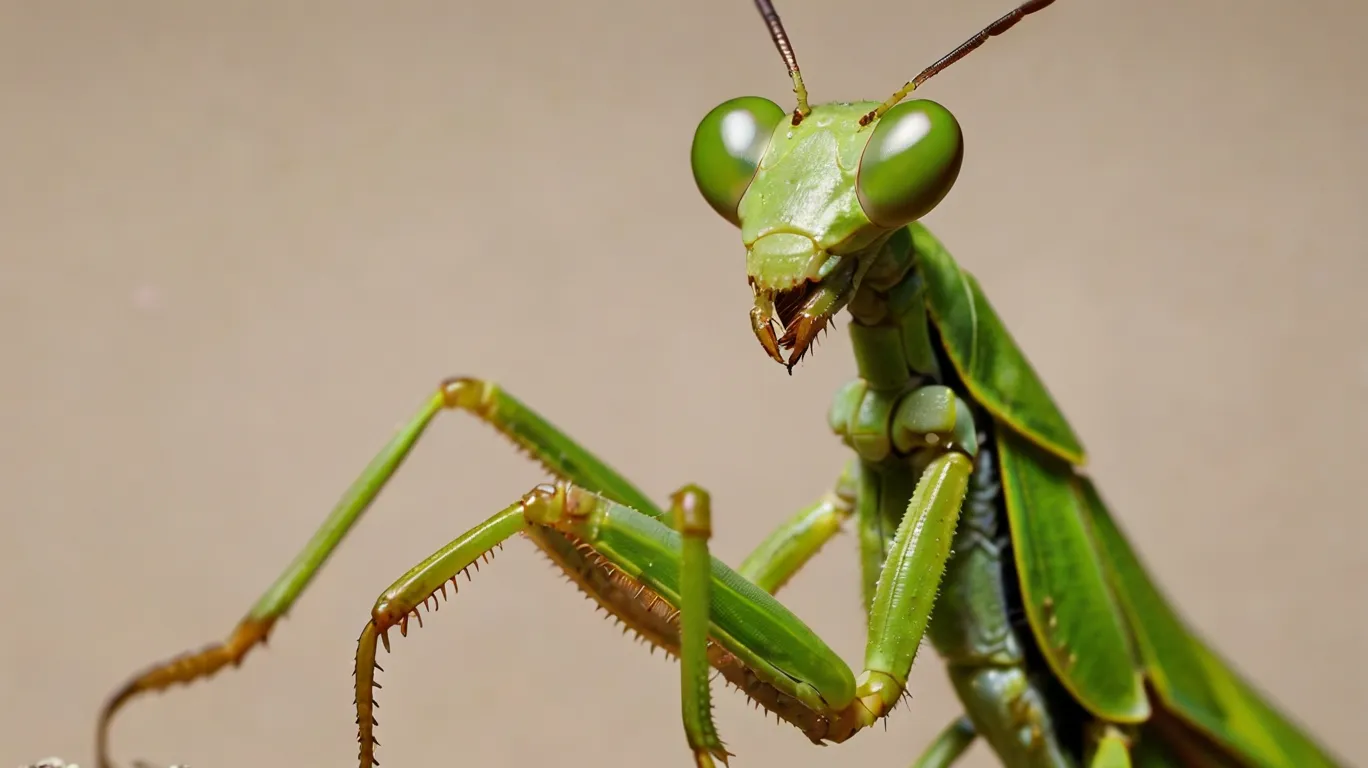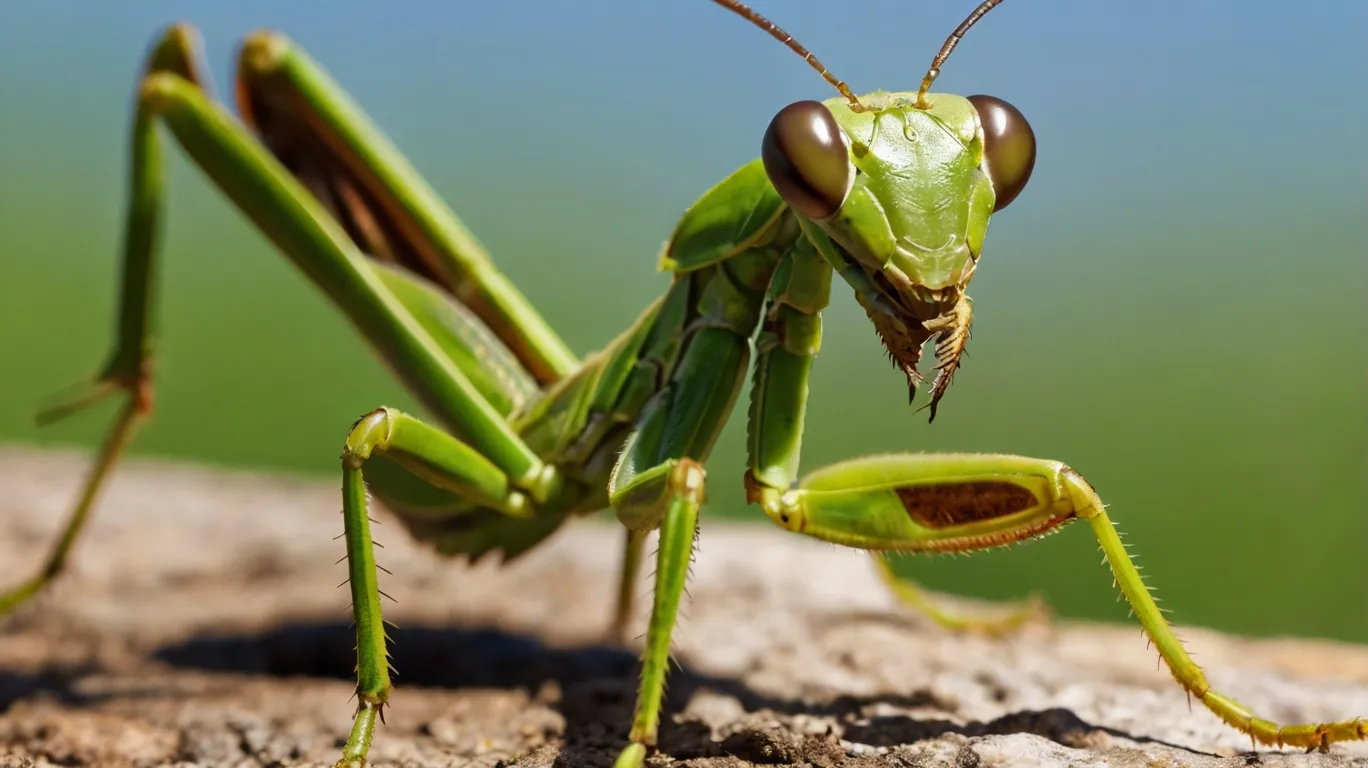Praying Mantis Handling & Interaction Guide
Handling and Interacting With Your Mantis
Praying mantises are captivating insects known for their predatory prowess and unique appearance. Unlike many invertebrates, some mantis species can tolerate, and seem relatively calm during, gentle handling. Interaction should always be slow, deliberate, and prioritize the mantis’s safety, as they are delicate creatures.

Understanding Mantis Behavior
Knowing their nature helps ensure positive interactions.
- Visual Hunters: Mantises have excellent eyesight and react to movement. Approach slowly and avoid startling them.
- Generally Calm (but Variable): Many species are calm, but temperament can vary by species and individual. Some may be more prone to jumpiness or threat displays.
- Delicate Bodies: Despite their predatory look, mantises (especially nymphs and recently molted adults) are fragile. Their legs and wings can be easily damaged.
- Defense Mechanisms: If threatened, a mantis might try to fly/jump away, strike with its raptorial forelegs (usually harmless to humans), or display a threat posture (spreading wings, raising forelegs).
Acclimation and Building Comfort
Allow your mantis time to settle and get used to your presence.
- Initial Settling: Give a new mantis a few days to adjust to its enclosure without attempting handling. Provide food and water as needed.
- Presence Association: Spend time near the enclosure so the mantis becomes accustomed to your presence during routine care like misting or feeding.
- Observe Temperament: Pay attention to how your mantis reacts to your movements outside the enclosure. Does it track you calmly or seem easily startled?
Gentle Handling Techniques
If you choose to handle, prioritize gentleness and safety.

- Wash Hands: Ensure hands are clean and free of lotions or chemicals.
- Slow Approach: Open the enclosure slowly. Move your hand or a twig/stick slowly towards the mantis from the front or side.
- Offer a Perch: Gently place your finger, hand, or a stick in front of the mantis. Encourage it to walk onto the perch voluntarily. Never grab or force it.
- Support its Feet: Allow the mantis to grip securely. They generally prefer textured surfaces.
- Hand Walking: Let the mantis walk from one hand to the other, or between your hand and a stick. Keep movements slow and steady.
- Keep Sessions Brief: Limit handling time, especially initially, to a few minutes.
- Low and Safe Area: Handle over a table or soft surface, low to the ground. Mantises can unexpectedly jump or fly (if winged adults).
- Returning to Enclosure: Gently guide the mantis back onto a branch or mesh inside its home.
Reading Mantis Signals
Recognize signs of stress or reluctance to be handled.
- Trying to Flee: Consistently moving away, jumping, or attempting to fly indicates it doesn’t want to be handled.
- Threat Display: Rearing back, spreading wings (if applicable), raising forelegs defensively. This is a clear sign to stop.
- Refusal to Climb On: If the mantis actively avoids your offered perch.
- Excessive Skittishness: If the mantis seems overly nervous or jumpy.
- Respect Boundaries: If the mantis shows signs of stress, don’t force interaction. Return it gently to its enclosure and try again another time.
Special Considerations
Keep these points in mind for mantis safety.
- Molting: NEVER handle a mantis that is preparing to molt (sluggish, refusing food, possibly hanging upside down) or has recently molled (appears soft, pale). They are extremely vulnerable during this time. Wait several days after molting before attempting handling.
- Nymphs: Young mantis nymphs are incredibly small and delicate. Handling is generally best avoided until they are larger and more robust.
- Feeding Time: Avoid handling immediately before or after feeding. They may mistake a finger for food, or a full abdomen makes them more vulnerable if they fall.
- Adult Females: Large, gravid (egg-laden) females may be heavier and less agile; handle with extra care to prevent falls.
Gentle Giants (Usually): Mantises can be rewarding invertebrate pets to interact with visually and sometimes physically. Always prioritize their safety with slow, gentle movements and respect their signals if they seem stressed or unwilling.